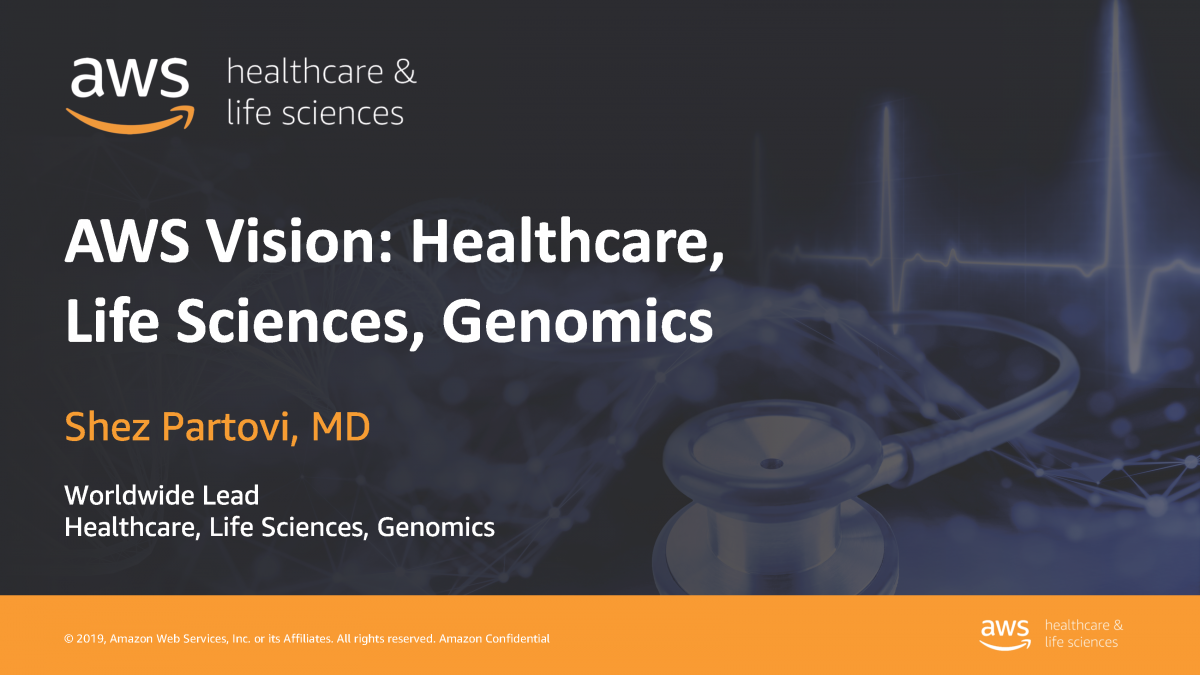Topic intro description here. Limited to 145 characters. Topic intro description here. Limited to 145 characters. Topic intro description here.
Using artificial intelligence, speech recognition to optimize note taking
Using artificial intelligence, speech recognition to optimize note taking
The battle to free physicians from the shackles of the electronic health record rages on, and AI-powered speech recognition is another front in the fight.
Since the implementation of EHRs, physicians have pushed back against the amount of time they must spend in front of a keyboard, arguing that they are not data entry workers and the new requirements of documentation take away from their time with the patient. Speech recognition-based EHR optimization has been shown in a variety of clinical settings to help reduce the amount of data entry required as well as improve physician performance.
The full article from Healthcare IT News can be viewed at this link.
How This Startup Is Applying Machine Learning To Disease Diagnosis
How This Startup Is Applying Machine Learning To Disease Diagnosis
With populations growing, health systems are quickly becoming overburdened, under-resourced and not equipped for the challenges they face in today's fast-paced world.
In the U.K., 24% of emergency admissions can be avoided through effective community care and case management solutions. And 58% of these are respiratory conditions alone, costing up to £165 billion. Delayed diagnosis can be both life-threatening and life-changing, but how can this be solved?
U.K.-based technology startup Feebris thinks it’s found the answer. The firm is using artificial intelligence algorithms for the precision detection of complex respiratory conditions in the field. It connects to existing medical sensors and can be used by non-doctor users to identify respiratory issues early, avoiding complications and hospitalizations.
The full Forbes article can be viewed at this link.
Transforming healthcare experiences: Exploring the impact of digital health technology on healthcare professionals and patients
Transforming healthcare experiences: Exploring the impact of digital health technology on healthcare professionals and patients
The 2019 Future Health Index is based on primary research conducted across 15 countries. The research explores the experiences of healthcare professionals and individuals – which includes both current and previous patients – in their health systems through two pillars of the Quadruple Aim: improved patient experience and improved staff experience.
Evolution and developments in digital health technology, such as digital health records (DHRs), telehealth and artificial intelligence (AI), offer benefits that could lead to better health outcomes and reduced costs, paving the way toward achieving the Quadruple Aim.
This year’s research sets out to understand knowledge and appetite for using digital health technologies and how they affect experiences of healthcare. DHRs, telehealth and AI were selected due to their growing levels of adoption, as well as their potential to transform healthcare experiences.
The full 2019 Future Health Index from Philips can be downloaded below.
Policy Briefing on Social Determinants of Health Data
 Social determinants of health (SDOH) recognize the needs & circumstances of the whole patient and play a role in the quality and cost of care. SDOH data has sparked conversations on the value and ethical use of this data and will likely be involved in the next wave of healthcare policy decisions.
Social determinants of health (SDOH) recognize the needs & circumstances of the whole patient and play a role in the quality and cost of care. SDOH data has sparked conversations on the value and ethical use of this data and will likely be involved in the next wave of healthcare policy decisions.
An Overview of Mobile Cloud Computing for Pervasive Healthcare
An Overview of Mobile Cloud Computing for Pervasive Healthcare
Mobile devices, along with wearable sensors, allow patients to access healthcare services from anywhere at any time. The longstanding constraints of computational capability and storage space on mobile devices can be alleviated by outsourcing computation- or data-intensive tasks to remote cloud centers. Thus, mobile cloud computing (MCC) has been recognized as a promising approach to provide pervasive healthcare services to people in their daily life. As the development and adoption of MCC techniques in healthcare, new optimization strategies have been explored and studied to help mobile cloud healthcare services to be deployed in a more effective and efficient manner. In this survey, we demonstrate how MCC techniques have been extensively deployed in various healthcare applications and, specifically, describe the general architecture and design considerations one should take into account while designing an MCC for healthcare scenarios. Given a large number of factors that may affect the performance of the MCC and even result in catastrophic consequences in healthcare, this paper presents the state-of-the-art optimization methods on the MCC for meeting the diverse priorities and achieving the optimal tradeoff among multiple objectives. Finally, the security and privacy issues of the MCC in healthcare are also discussed.
The full article can be downloaded below.
Unlocking the Potential of EHRs: Let's Start from Scratch
Unlocking the Potential of EHRs: Let's Start from Scratch
Electronic health records (EHRs) have helped healthcare organizations move on from paper-based record keeping and reduced errors while enhancing compliance, but there has been no real transformation of this technology since the 1970s.
To fully leverage the potential of EHRs, we must fundamentally rethink their purpose and create the dynamic, patient-facing tool that the current healthcare landscape calls for.
The full Forbes article can be viewed at this link.
Presentation: AWS Vision: Healthcare, Life Science, Genomics
 "AWS Vision: Healthcare, Life Science, Genomics," a presentation from June 6 Leadership Council Meeting by Shez Partovi, MD, Worldwide Lead, Healthcare, Life Science, Genomics from Amazon Web Services.
"AWS Vision: Healthcare, Life Science, Genomics," a presentation from June 6 Leadership Council Meeting by Shez Partovi, MD, Worldwide Lead, Healthcare, Life Science, Genomics from Amazon Web Services.
Why It Matters: Prescribers Can Now Access Accurate Medication History Data for Virtually Every American
Why It Matters: Prescribers Can Now Access Accurate Medication History Data for Virtually Every American
Surescripts processed 17.7 billion secure health data transactions last year. More than 2.5 billion of those were requests for patient medication history data to be delivered from pharmacies and pharmacy benefit managers (PBMs) directly into care providers’ EHR software.
Continued network expansion and rapid provider adoption of powerful technologies like electronic medication history are a good thing. But what real benefit does high quality medication history data offer? How is this technology helping doctors, nurses and other clinicians deliver safe, efficient and cost-effective healthcare?
I met with Stacy Ward-Charlerie, Manager of Product Innovation, to gain a deeper understanding of the critical role that accurate and complete medication history plays for patients and providers at the point of care.
The full Surescripts article can be read at this link.
Non-traditional Healthcare Data Task Force
This task force will identify best practices regarding access and use of non-traditional data types for predictive analytics, artificial intelligence, etc. Task force will also identify challenges, solutions, usability of data as well as identify innovative policy and process approaches that will help policy makers understand the value of this data.
Flexible collaboration infrastructures and healthcare information exchange in hospitals: an empirical resource-based perspective
Flexible collaboration infrastructures and healthcare information exchange in hospitals: an empirical resource-based perspective
Exchanging health information and data will enhance the efficiency, quality, cost-effectiveness, and even safety of healthcare practices. However, views and strategies differ on how hospitals can facilitate or enable this exchange process. This study explores a relationship between two constructs, i.e., a flexible collaboration infrastructure—an integrated set of IT assets and networking functionalities that support applications and enable business collaboration—and health information exchange. Second, we argue that the strength of this relationship is influenced by the degree to which hospitals deploy security measures. Findings—based on an SEM-PLS analysis on a sample of 983 European hospitals—show a positive relationship between the two constructs. We additionally find that hospitals’ security measures to protect the confidentiality, integrity, and availability of the data condition this particular relationship. Our findings contribute to the literature and provide valuable insights for hospitals.
The full article can be downloaded below.
